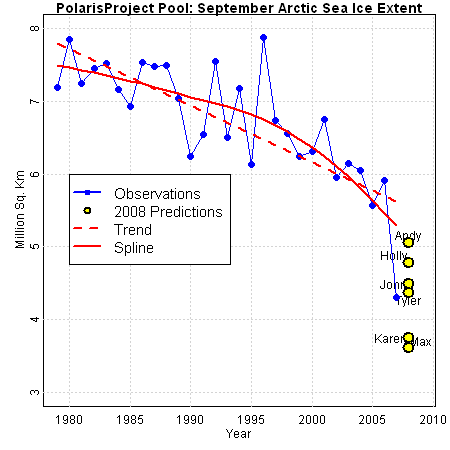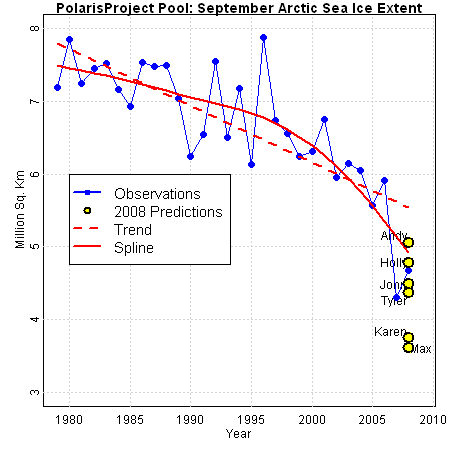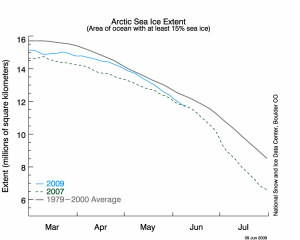Go ahead. Last year we had a Polaris Project bet going to see who could guess the minimum sea ice extent in 2008. Here were our guesses:
Here’s what 2008 really looked like:
Holly won the pool and got the glory and acclaim that came with it (that was the only prize).
The guesses last year were interesting. We used different methods for trying to predict the minimum. Max and Karen really thought the bottom had fallen out and we had reached a tipping point. They still might be right. The 2008 “recovery” was tiny and extent is not the same as volume. 2008 was likely the lowest volume on the record. See here. I tried to predict the 2008 extent using a statistical trick (a cubic smoothing spline). Holly and John came closest and had no good defense of their guesses but got it right. Go figure.
Now comes round two. What’s going to happen in 2009? This figure shows the current state of Arctic sea ice:
You can click here to see this in close to real time from the NSIDC.
We are going to continue the pool and see who can take home the glory this year. Will Max and Karen revise their doomsday approach to sea ice? I, for one, am going to spend some more time thinking about what the ocean temps are doing this year. E.g., here are the current global sea surface temperature anomalies. Compare that to the same period in 2008. Will these have some predictive power? Will the breakup of the 2008 La Nina impact the sea ice extent? Or, was the huge 2007 melt really a result of unusual weather (note weather is not climate) conditions over the 2007 summer in the Arctic for melting ice? E.g., give a good read here to learn some more about the unusual atmospheric pressure pattern over the Arctic in 2007.
I think we’ll have more on this soon.






